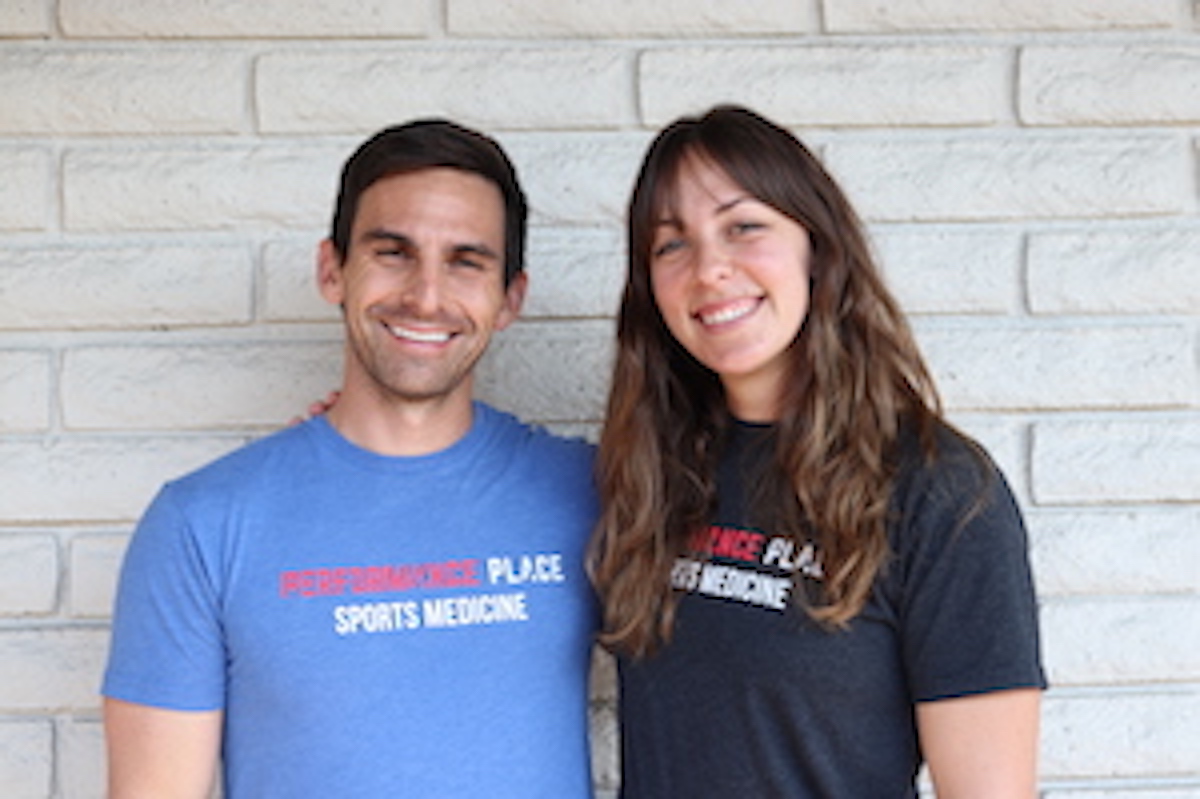Sacrum Pain
Sacroiliac Joint Dysfunction is the most common diagnosis for sacral pain. Poor mobility, stability, or strength causes dysfunctional movement in the pelvic/ lumbar spine hip complex creating stress and compression. Recovery to activity typically occurs in weeks to months.
Yet, we can not blame Sacroiliac Joint Dysfunction for all sacral pain in the world. Sacroiliac Joint Dysfunction tends to localize into the SI joint region and lower back… so what about those who experience aches and pain in the butt crease?
We will cover that here.
In this article, I will cover all you need to know about sacrum pain. Included are causes, other possible diagnoses creating your sacral pain, and some treatments that work!
Watch all of the fantastic videos and resources I have for you in this article before you go so you get all of the information you need to make an informed decision about your treatment.
Let’s start with where your sacrum is.
Your sacrum is the prominent bone at the very bottom of your lower back. Shaped like a triangle, this large bone of the spine forms the cornerstone of your pelvis. On each side of the sacral bone are the ilium bones. Together with the ilium and the sacrum form the sacroiliac joints (SI joints).
Your lumbar spine (lower backbones) sits on top of your sacrum, below the coccyx bone (tailbone) is attached. The S1 intervertebral disc sits on the top of the broad sacral base. On top of the S1 intervertebral disc sits the lowest of spinal bone called the L5 vertebral body.
I’m Sebastian. Thanks for reading my article!

Who Gets Sacrum Pain?
Pain in the sacral region starts typically around the age of 20, but you can experience it when you’re older as well. It tends to begin around the lower back/ SI joint region before it travels down the butt crease and sometimes in bony areas of the tailbone.
Note: Numbness into the region between your legs can be from another severe condition known as Cauda Equina Syndrome. You can read more about it here.
Sedentary and deconditioned people experience a deep tailbone and sacral ache more than physically active people. Sitting seems to be the most substantial associated factor to those people who develop it.
Yet, active people are not exempt from having pain in their sacrum, though.
Runners, cyclists, and weightlifters all can suffer from SI joint pain, low back stiffness, tailbone pain, and glute ache.
We will take a deep dive into common symptoms in a later section.
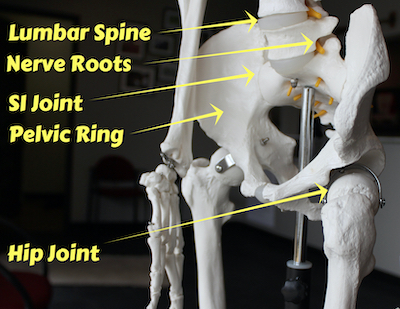
Causes of Sacrum Pain
Sitting seems to be the commonality with people who experience sacral and tailbone pain (aka coccydynia).
Sitting places pressure on the tailbone and lower back, tolerable in small doses, yet when sitting dominates your day, the pressure will build up.
Most of the time, your body can handle tolerant the pressure associated with sitting. Pain is your body telling you that it is being compressed and needs a break.
The most straightforward treatment is removing or modifying the triggering activity: sitting.
There are a few simple ways to modify sitting.
- Sitting on the end of your seat
- Replacing sitting time (going for a walk)
- Adding lumbar support to your chair
- Changing the seat completely
You do not need to make these lifestyle change forever, but it may be the most straightforward remedy for a few weeks.
Just like an engine that has overheated after an intense drag race, removing the trigger (redlining the engine) for a short period is enough to allow your engine to function correctly again.
The deep ache in your sacrum and tailbone is no different. The best long-term plan may be to optimize your body so sitting is not triggering (AKA optimizing your engine cooling system).
We can discuss this in later sections.
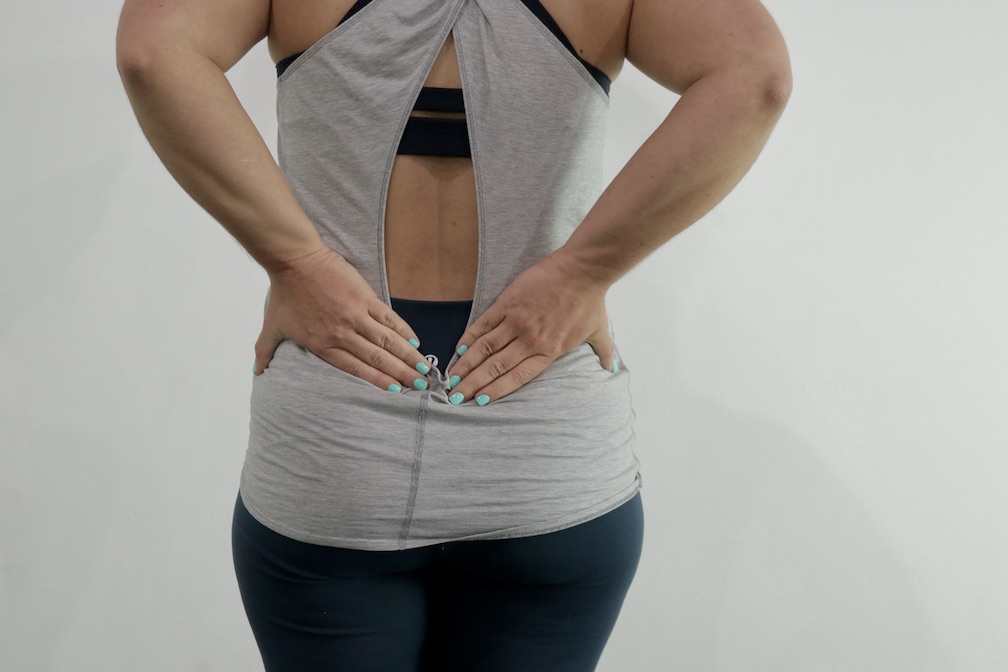
Symptoms
Symptoms around the sacrum and tailbone vary from person to person, based upon their actual diagnosis/ root cause. Here is a list of what many people experience:
- Pain that improves with walking
- Symptoms increase with prolonged sitting
- Symptoms increase with bike riding in an arrow position, better when upright
- Needle-like feeling on the sacrum
- Deep ache in the tailbone
- Sharp sensation on tailbone with sitting or pressure
- Lower back pain or stiffness
- Tight hip flexor
- Hamstring tightness
- Deep discomfort in the sacrum
- Tailbone stabbing
- TFL muscle ache
- Deep glute muscle ache
- IT band tension
- Pressure in the lower back
- Feeling like you need to “pop” your hips or SI joint
You may not be experiencing all of these symptoms, but they are common findings the longer you are experiencing your problem. Movement compensations tend to create a cascade of associated symptoms that all reversible with the right treatment program and coaching.
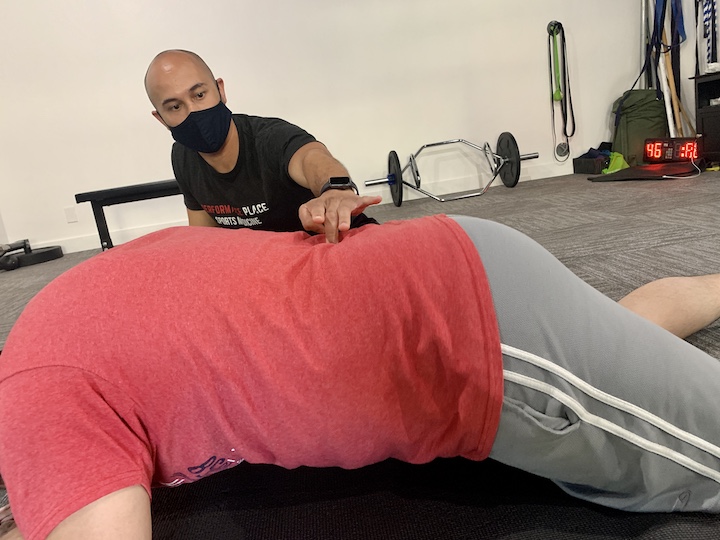
Diagnoses
- Sacroiliitis (our Youtube video)
- SI Joint Sprain/ Strain (video)
- Superior Cluneal Nerve Entrapment
- Inferior Cluneal Nerve Entrapment
- Lumbar Disc Herniation (video)
- Ankylosing spondylitis
We always have to include the rare but possible sinister diagnoses like a tumor, infection, cord compression, and much more.
To learn more about the “Red flags of low back pain,” go to this website.
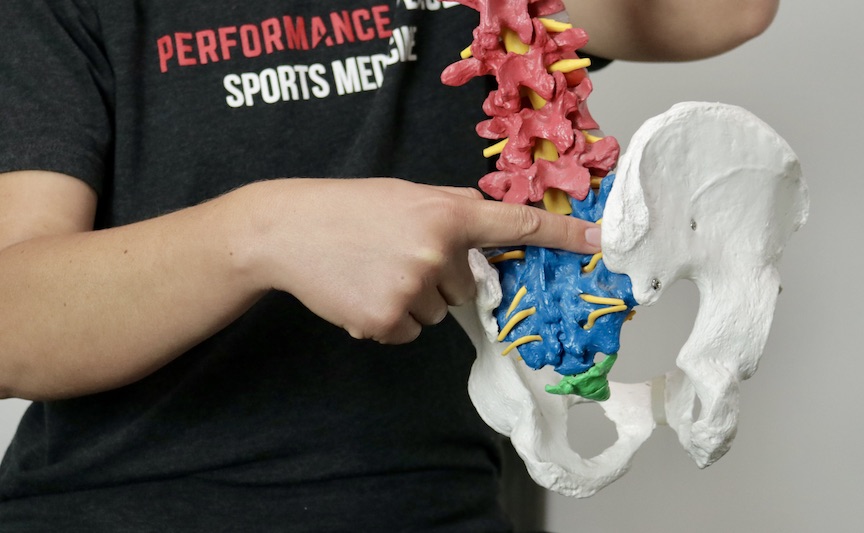
How To Reduce Sacrum Pain
Reduction of sacral pain comes down to finding out these three things:
1 – A correct diagnosis
2 – What makes you feel better?
3 – What are you doing that keeps the pain around?
We have created this webinar about SI joint pain that may assist you in learning more about SI joint pain, but it will not fully cover tailbone pain. Tailbone pain is a common associated symptom of SI joint pain.
We have found some of the simple suggestions we have in the webinar work for many people with sacral and tailbone aches. Still, some people will require specific recommendations for their situation.
It was that easy to feel good, then everyone would be doing it right!?
The webinar is a good start regardless. It is on-demand here.
After you figure out those simple points, you can perform supplemental exercises to help make your body more resilient (i.e., sit again without pain).
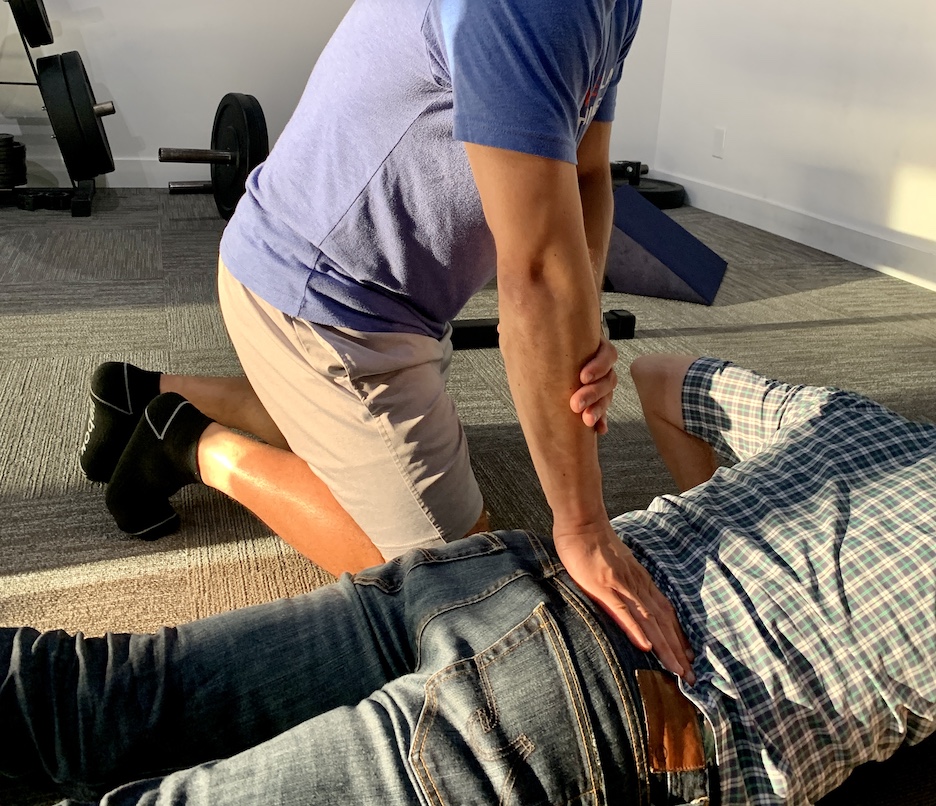
Non-Surgical Treatment
In my opinion, the best non-surgical treatment for lower back stiffness, SI joint pain, and tailbone ache is active care. Progressive exercises assist your body in becoming more tolerant of the compression from sitting.
I know all of the “experts” on your local running or triathlete forums may say something else. I’ll assure you that progressive exercises to build mobility, stability, and strength within regions of the body where you need them is the best.
I’ve read all the forums too:
Cortisone, Active Release, Rolfing, Adjustments, Prolotherapy, Deep tissue massage; I have tried all of these with the many sacral pain/ tailbone pain clients I’ve worked with, and none of these treatments work better long-term as a customized mobility, stability, and strength program with good coaching.
Cortisone, Active Release, Rolfing, Chiropractic Adjustments, Prolotherapy, stretching your hip flexor, stretching your hamstrings, and Deep tissue massage are great at reducing pain, but they will not keep it away.
We need to reverse-engineer how you got into this situation. Challenging corrective exercise is the most effective way.
Corrective exercise can also be a very effective way of reducing pain as well. Below I’ve included exercises that we use that can prove that point. By the way, if you like these exercises, please link this webpage to your runner’s forum of choice… they tend to kick out good info like this if we post it ourselves!
Hardstyle Planks
Banded Bridges
Walking – yes, walking outside – simple yet effective.
This one works VERY well, too (scheduled to release on our Youtube Channel soon). If it is not live, subscribe and get it when it does.
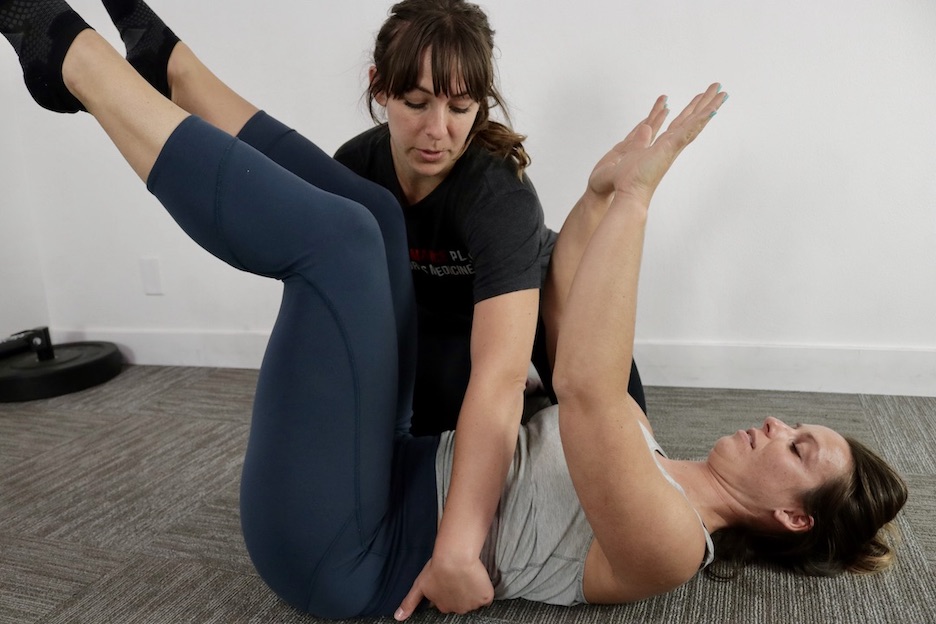
Recap
No matter what way you spin it, walking and standing can help with sacrum pain and tailbone pain, no matter the diagnosis. Sitting tends to increase it, so doing the opposite will generally help.
Yet, in some situations, you may need professional help. When you need assistance, we will be there 🙂
I’m Sebastian at Performance Place Sports Care. We can help virtually or in person. We are in Costa Mesa CA. Rather than tell you how great we are, allow our Google Reviews to speak for themselves.
Our clients have some amazing stories of recovery! Start your recovery journey by booking your first session with us today!
